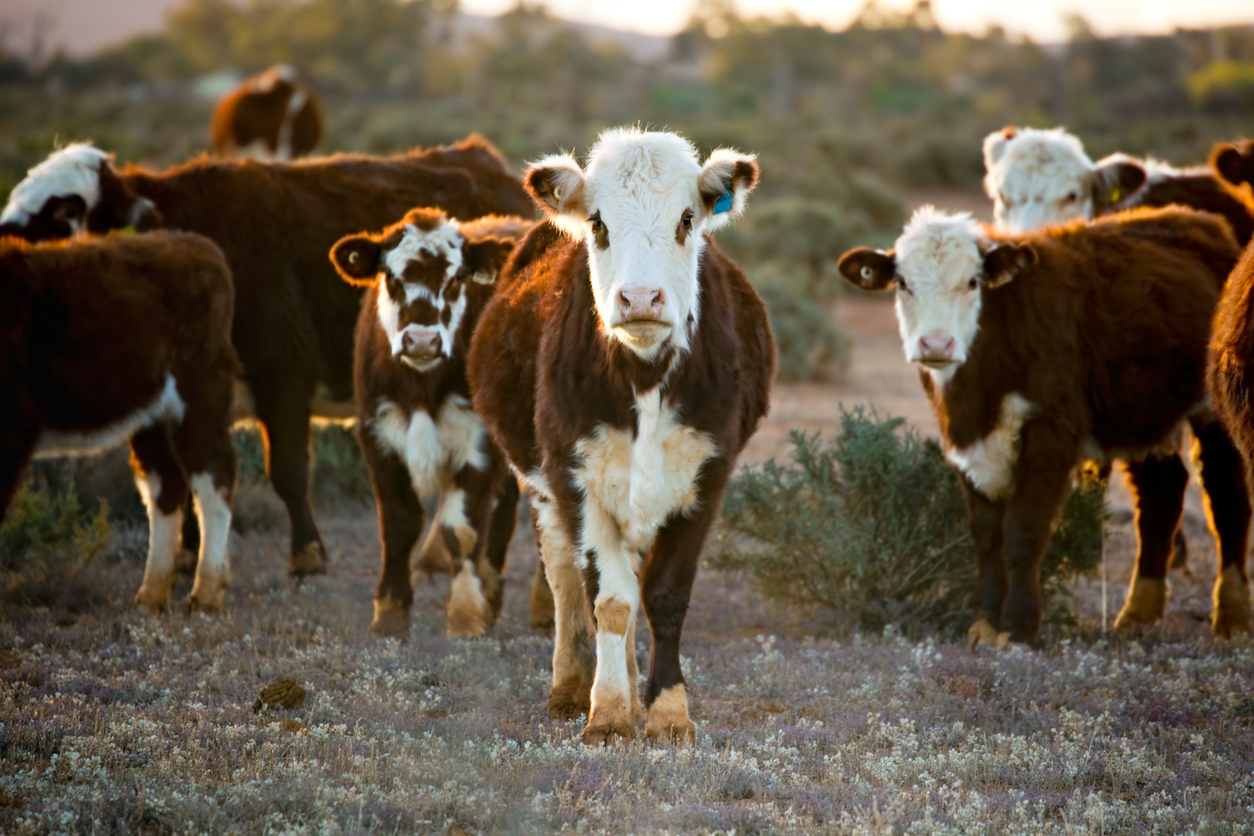Vaccinating your Cattle

Vaccination is a vital component of any cattle management plan. It prevents a range of deadly diseases that can affect the health of cattle herds. Most cattle require yearly vaccination to prevent a range of common diseases. The most common vaccination for cattle is either a ‘5 in 1’, which covers five clostridial diseases, or a ‘7 in 1’ vaccination, which covers 5 clostridial diseases as well as leptospira hardio and leptospira pomona.
Calves are generally vaccinated for the first time when they are after 4 weeks old. They should receive a booster vaccination around the time they are being weaned or just before. Passive immunity is transferred from the mother to the offspring in the first milk (colostrum). If the mother is boostered with 5-in-1 vaccine about one month before the offspring is due to be born the level of protection and period of time for which the young animal is protected is increased.
The diseases likely to occur vary from district to district and season to season. Herd managers should seek advice from their veterinary practitioner regarding their situation.
Read the label on the vaccine thoroughly before use and follow all label directions or restrictions, including directions for dose rates, route of administration, safety precautions, personal protective equipment, and disposal of empty containers and unused product.
Maintain cleanliness at all times during vaccination. Great care must be taken to avoid contamination of the vaccine, needle and internal parts of the syringe by contact with unsterile surfaces or unwashed hands. Keep needles sharp and clean. Replace frequently. Use the shortest possible needle, not exceeding 15mm in length.
Clostridial diseases[i]
Clostridial diseases such as including tetanus, blackleg, malignant oedema, botulism, enterotoxaemia (pulp kidney) and black’s disease. Clostridial diseases are caused by anaerobic bacteria and are usually fatal. Death occurs rapidly with pulpy kidney, black disease and blackleg, but takes several days to weeks with tetanus. In severe outbreaks, animals can die suddenly and in large numbers. Occasional deaths may also be due to these diseases.
The bacteria that causes these diseases are common in a range of environments and widespread. They are found in the soil, faeces and the gut of healthy animals. The aim of vaccination is to help boost the overall immunity of the herd as well as individual animals.
|
Disease |
Species affected |
Predisposing causes |
Features and |
|
Black disease |
Sheep mainly |
Damage to the liver by young migrating liver fluke. |
Sudden death, particularly in sheep. Plug of yellowish dead tissue in the liver usually on the surface but occasionally deeply embedded, with signs of liver fluke damage. Rapid decomposition of the carcase |
|
Blackleg |
Cattle, sheep |
Damage to muscles, such as bruising following yarding. In sheep blackleg tends to follow an injury, such as at vaccination, shearing, castration and mulesing. |
Sudden death. Affected animals are usually in good condition. May be swelling of a leg, the leg may crackle when touched. Rapid decomposition and bloating of the carcase. The carcase should be disposed of to prevent infection of other animals. |
|
Malignant oedema and gas gangrene |
Sheep mainly Also cattle and goats |
Deep wounds such as dog bites, crow attacks and lambing injuries |
Soft swelling followed by a discharge from the wound. Death usually occurs after 1-2 days. Treatment can be attempted through the use of antibiotics and cleaning of the wound. |
|
"Swelled head" |
Rams |
Rams fighting, especially young rams. |
Specific type of malignant oedema. Extensive swelling of the head. Death after 48 hours, though some recover if treated early. |
|
Enterotoxaemia (pulpy kidney) |
Sheep, cattle and goats, particularly young animals |
High levels of starchy food in the diet and slowing of gut movement. |
Death is extremely rapid, occuring in 2-3 hours in young animals, and up to 24 hours in older animals, with convulsions prior to death. Rapid carcase decomposition gives rise to "pulpy kidneys". Usually seen as outbreaks in sheep, and the death of just a couple of animals in other species |
|
Tetanus (lockjaw) |
Horses and pigs most susceptible Cattle, sheep and goats |
In sheep, particularly following use of rubber rings for marking, dog bites and shearing wounds. |
In sheep, particularly following use of rubber rings for marking, dog bites and shearing wounds. |
Leptospirosis
Leptospirosis is a bacterial infection. In NSW cattle it is caused by Leptospira hardjo and Leptospira pomona. These serovars of Leptospira survive in cool, moist conditions, so this disease is common in cooler areas where there is surface moisture. Leptospirosis also exists in tropical dairying areas.
Vibriosis
Vibriosis is a venereal disease of cattle caused by the bacterium Campylobacter fetus venerealis. The first indication of vibriosis in a herd are cows returning to service and low conception rates (as low as 40 to 50 per cent).
Pestivirus
Reproductive losses as a result of pestivirus infection include return to service, abortion, stillbirths, birth of live calves with severe birth defects, and the birth of ill-thrifty, persistently infected carrier animals that often die before two years of age.
Neonatal scours
Escherichia coli (E. coli) and salmonella are bacteria that may cause serious diarrhoea in young calves, especially dairy calves. Disease is associated with close contact between animals and poor feeding or watering hygiene. Vaccines are available for E.coli and salmonella but their use is case specific: they are not recommended for general use.
Bovine ephemeral fever
Bovine ephemeral fever is a viral disease that is spread by insects. The disease occurs only when the virus-transmitting insects are present. The virus causes a debilitating fever. Affected cattle stop eating, are weak, and may exhibit joint swelling and lameness. Severely affected animals may go down and remain down for many weeks.
Anthrax
Anthrax is a notifiable disease under the Stock Diseases Act. Thanks to the use of a highly effective vaccine, the incidence of anthrax is declining. The greatest risk period is summer.






